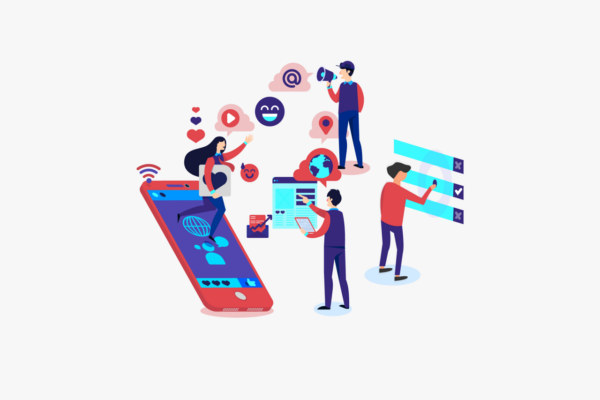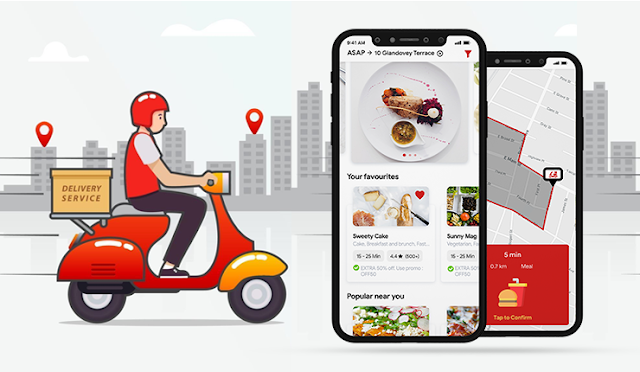How To Set Up Xamarin App Development On iOS and Android?
Newer techniques are
knocking the door of technology each day.Creativity has been an inescapable
trait.That’s why XAMARIAN is an open-source platform which works on both iOS& Android, and windows with. NET is an open-source platform.
We all know how
important SDLC is? Likewise, we develop for the web in the similar fashion SDLC
of mobile is equally important.The whole idea is to develop business logic.
- INCEPTION-- Every finest thing in the world is developed
with a productive thought.This lays the right platform when it comes to
developing a mobile App.
- Design-- Understanding user requirements lay the roadmap of
success. This’ll help you to understand (UX) to have a fair understanding
of what layout is about and convert into a user interface (UI) with
designers.
- Development--This is the most critical phase and is the actual
binding for the development process.
- Stabilization-- This allows the actual building.In this way, bugs
are getting fixed.This will go into a limited beta phase and a chance to
provide feedback and changes.
- Deployment-- This is an actual building.In this process, QA
usually brings a test application and how bugs are fixed.
To learn more about how
it works under the hood please refer to the official documentation: The key
thing about Xamarin as it provides C#, libraries, and runtime which
makes it a versatile brand across both iOS & Android.
The unique thing about
Xamarian as it provides a comprehensive and detailed overview to make it
substantial.
Business Logs
Data Models
View Model
Restful Service Calls
Interaction with SQL
database
The development process
cover things :
- Portable
Class Library
- Shared
Project
- .Net
Standard Library
A shared project does
not get compiled on its own, it exists purely as a grouping of source code
files and is included in other projects. When a different project is referenced
by that, the code is effectively compiled as part of that project.This
cannot reference any project type (including other Shared Projects).
Portable
Class Library
When you create an
Application project or Library subject , the resulting DII is restricted to
working on a single platform.This writing DLL is restricted to working on the
specific problem.Thus,creating a portable class library.
Advantages:
Centralized code sharing
—
This is like using
multiple platforms: write and test code in a single project and is consumed by
other libraries or applications.
Refactoring operations
will impact all code loaded in the solution (the Portable Class Library and the
platform-specific projects).
The PCL project can be
easily referenced by other projects in a solution, or the output assembly is
shared for others to reference in their solutions.
Disadvantages:
Because the same
Portable Class Library is shared between multiple applications,
platform-specific libraries are referenced.
The Portable Class
Library subset does not include classes that would otherwise be available in
both MonoTouch and Mono for Android (such as DllImport or System.IO.
Shared
Projects :
The code in a Shared
Project can contain compiler directives that will enable or disable sections of
code depending on which application project is using the code, which is
suggested by the colored platform boxes in the diagram.
One of the limitations
of the shared projects as it does not get compiled on its own, it exists purely
as a grouping of source code files and could be included in other projects.
When this is referenced by another subject the code is effectively compiled as
part of the subject.This cannot be referenced by any other project type
(including other Shared Projects).
In this way, standard
projects are similar to the source code (the C# file in shared).These edits to
the share codes across all three projects.Unlike most other project types,a
shared project does not have any output (in DLL form), instead the code is
compiled into each project that references it.
The Shared Project code
contains compiler directives that allow you to enable or disable sections
of code depending on which application project is using the code, suggested by
the colored platform boxes in the diagram.
. NET
Library
Often called the
successor of Portable Class Library.The .NET Standard Library is a formal
specification of .NET APIs and intended to be available on all .NET
runtimes.
The motivation behind
the Standard Library try to establish greater uniformity in the .NET
ecosystem. ECMA 335 proceeds to establish uniformity for .NET
runtime behavior, but there is no similar spec for the .NET Base Class
Libraries (BCL) for .NET library implementations.
This work as a
simplified, next- generation Portable Class Library. A Library that comprise a
uniform API for all .NET Platforms including .NET Core.
You can create a single
.NET Standard Library and use it from any runtime that supports .NET Standard
Platform.
This makes Clean
Architecture allow us to separate concerns. By keeping the business rules and
data logic without knowing anything about it we ensure our app is easy to test,
maintain and increase the code-sharing portion of the application.
This helps in utilizing
the Dependency Injection pattern to decouple object instantiation while getting
rid of creating and passing dependencies into constructors manually.
Dependency Injection
allows us to cut down on boilerplate code and make the development process a
joyride.Implementing proper dependency injection in our apps.
Loose coupling
Easily testable code
Code reusability
Our app will consist of
two shared modules:
1)Domain and 2) Data
and two
platform-specific modules:
Presentation.Android
Presentation.iOS
We believe you’d be familiar with the app
architecture and preparation steps. So stay tuned for our next article and
don’t forget to subscribe!
Also, if you’d like to know more about the
technical side of things or want to develop your profitable mobile app, feel
free to contact @ Maxtra Tech



Comments
Post a Comment